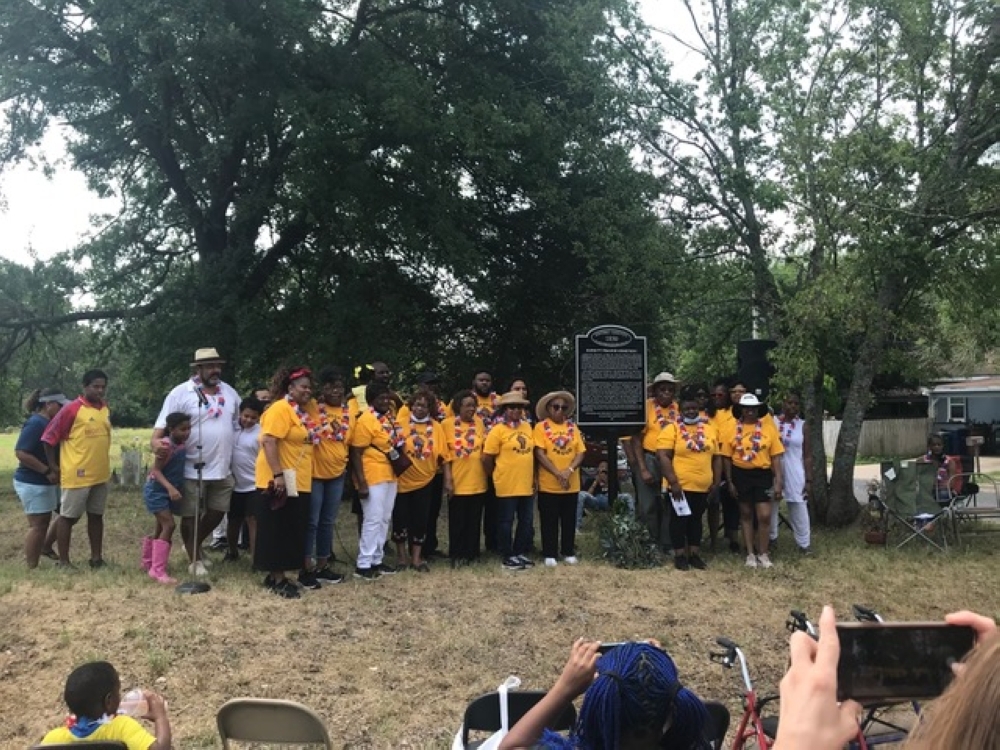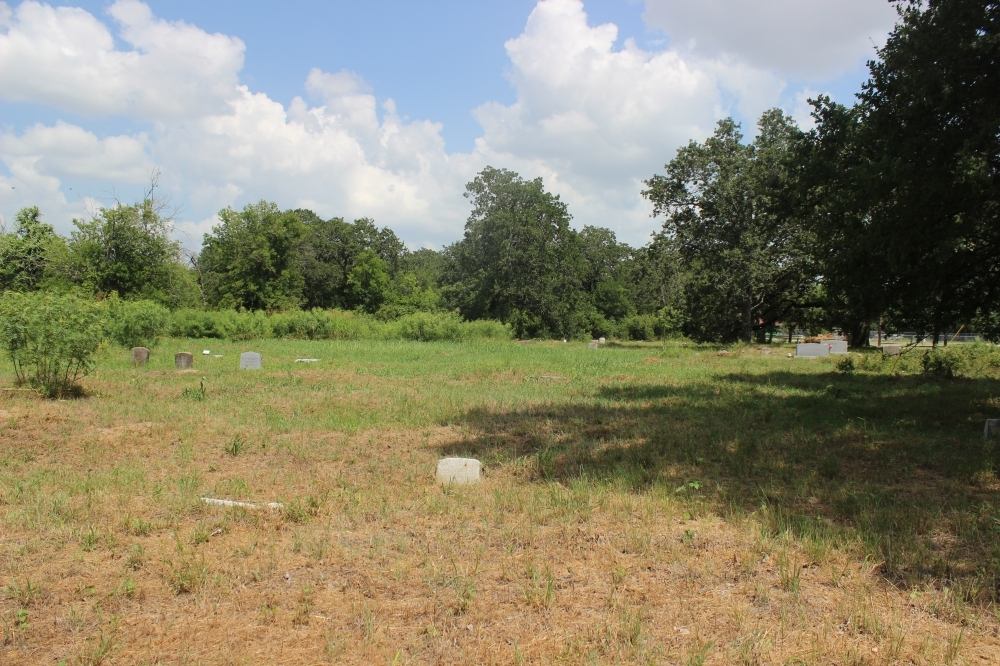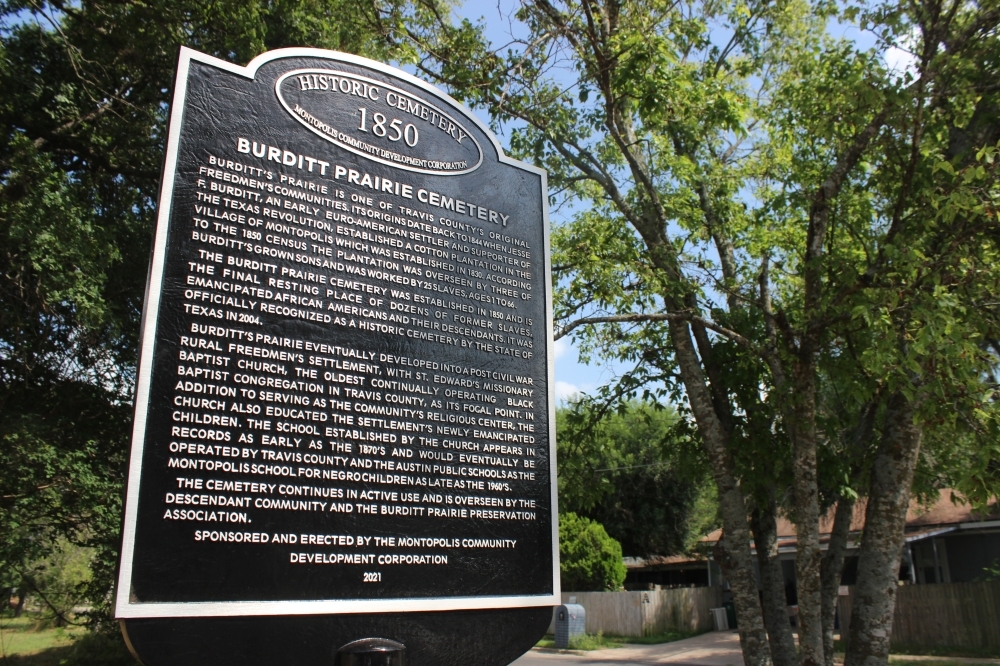Historical marker dedicated to Montopolis at the cemetery linked to the old plantation, community of freedmen
[ad_1]
The new historic monument for the cemetery was unveiled by the Montopolis Community Development Corporation on June 18. (Ben Thompson / Community Impact Newspaper)
Community members gathered in Montopolis on June 18 to celebrate the unveiling of the neighborhood’s first historic monument, located on the site of a more than 170-year-old cemetery that archaeologist and historian Fred McGhee has identified as the oldest African-American cemetery in Austin.
The 3-acre Burditt Prairie Cemetery, located off Felix Avenue just east of Montopolis Drive, was established in the mid-1800s for the burial of slaves working on a cotton plantation operated by Colon Jesse Burditt in what is now Montopolis. According to McGhee, chairman of the nonprofit Montopolis Community Development Corporation, the area around the Burditt property was reestablished as the community of Burditt’s Prairie Freedmen in the aftermath of the Civil War, and the cemetery remained in use by residents of the city unincorporated for years.
The cemetery has since withstood years of change and redevelopment in Montopolis while remaining operational, despite the absence of an official guardian for long periods. This year the cemetery was marked as a historic site by the development company for its place in the history of the neighborhood and as a home for generations of people linked to the old plantation.
“Over 90% of those buried here are … direct descendants of Burditt’s enslaved population, Burditt’s African-American enslaved population, which of course has branched out into thousands of directions. But everyone buried here has a family history with the cemetery, â€McGhee said.
The property is now owned by the Montopolis CDC, and the placement of the organization’s historic marker at the site could be the first step in what McGhee said he hopes will be a multi-year restoration process there.
Given its origins and problems, such as vandalism and industrial landfills over the years, the cemetery has not been properly preserved over the past century and information about some of its occupants and their tombstones has come to light. been lost. McGhee said a next step in locating and identifying the 100 to 200 people buried on the property could be a field survey involving excavation and eventual mapping of each occupied plot via a digital or analog grid system.
“As a pure archaeological question … we have the responsibility to maintain it as a cemetery, but also to identify where the objects are. Because there is a significant amount of damage here, â€he said.
The property also remains open as a working cemetery. McGhee said his most recent burial took place just a few months ago, and given both the current condition and unknowns related to past burials, he is now considering the potentially multi-year excavation project and the site restoration as a priority.
“Even to our dedication [in June] we had people going, “Oh yeah, I know I’ve got someone buried here, but I don’t know where she is.” We have to be able to respond to that, â€he said.
In addition to targeting this larger rehabilitation and research project, McGhee said he plans in the short term to build on the recent unveiling of a marker with a second historic landmark at Montopolis linked to the Mexican history of the region. He said the memorial, which could be located within blocks of San Jose Cemetery on Montopolis Drive, could also be established as one of the area’s first bilingual markers.
While McGhee said planning and fundraising for future projects on both properties remain his goals and those of the Montopolis CDC, he highlighted the recent inauguration of Burditt’s Prairie Cemetery as a step forward for preservation. and site recognition.
McGhee also credited the participation of various organizations in the Montopolis area and the ensuing barbecue and block party in honor of Juneteenth as an occasion for the sometimes overlooked community history to “shine”.
“It was a party, really,†he said. I have attended many signings of markers in a professional capacity. This is the one I’m most proud of. … Not just because I organized it, but because of what it meant, who it was for and how it happened. “

[ad_2]


